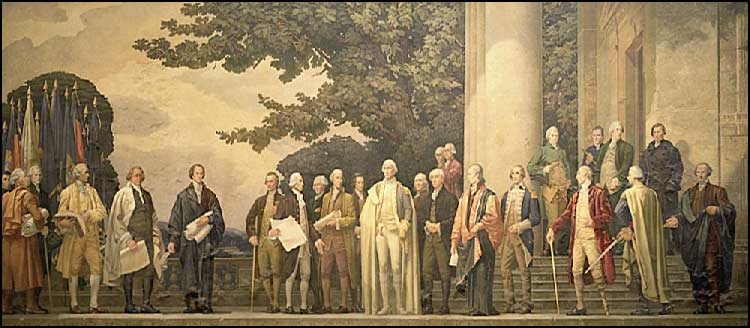
The Constitution, mural by Barry Faulkner (National Archives and Records Administration)
During the hot, muggy summer of 1787, a Grand Convention was called together at the Pennsylvania State House (now called Independence Hall) in Philadelphia for the purpose of revising the Articles of Confederation, which had proved a highly unsatisfactory document for holding the United States together during the first 13 years of the young nation’s existence. While waiting for enough delegates to arrive to make a quorum, James Madison took the initiative of drawing up an initial proposal to get the discussion going: the so-called Virginia Plan.
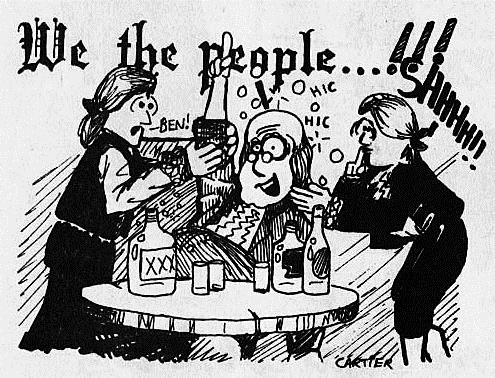
Escorts watch Ben Franklin carefully during a visit to the local pub, making sure he doesn’t reveal the secrets of the Constitutional Convention.
Cartoon from NT Daily (September 17, 1987).
The delegates had a complex, delicate task ahead, and precautions were taken to ensure secrecy so that everyone would be able to speak his mind honestly and change his mind freely as discussions progressed. Heavy curtains were drawn, and windows were nailed shut. The notoriously bibulous and garrulous Benjamin Franklin was accompanied during public excursions by chaperones charged with making sure he wouldn’t inadvertently reveal too much. James Madison took extensive notes of the debates. Over the next four months the delegates sweated, argued, and struggled with the task of devising a system of government adequate to meet the needs of a new nation. They didn’t just revise the Articles of Confederation; rather, they produced an entirely new document from scratch, perhaps overstepping the bounds of their original mandate.
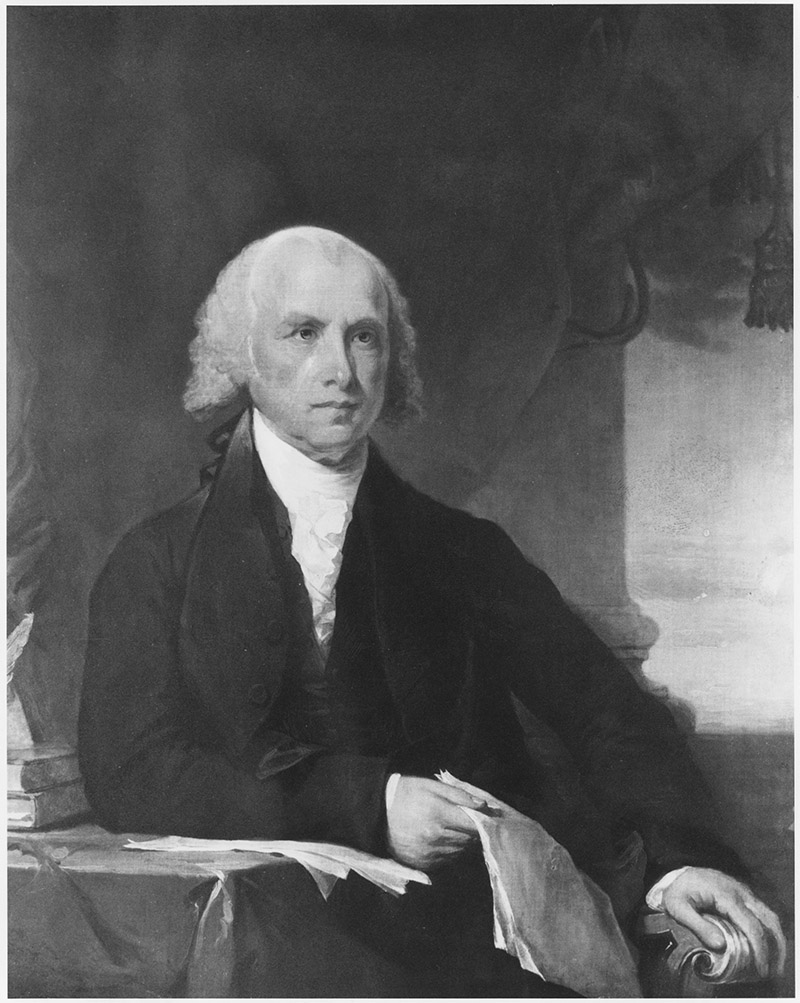
“But what is government itself, but the greatest of all reflections on human nature? If men were angels, no government would be necessary. If angels were to govern men, neither external nor internal controls on government would be necessary.”
—Federalist, No. 51
James Madison, copy of portrait by Gilbert Stuart. (148-CC-13(3))
View in National Archives Catalog
On September 17, 1787 the final draft of the Constitution of the United States was signed by 39 of the 55 delegates. The document was then sent to the states for ratification while James Madison, Alexander Hamilton, and John Jay, writing jointly under the pen name “Publius,” campaigned for acceptance of the new constitution in a series of articles and essays that were eventually compiled and published under the title The Federalist. Their arguments—plus the promise of a Bill of Rights enumerating certain personal freedoms not explicitly provided for in the Constitution—proved persuasive, and the new Constitution went into effect on June 21, 1788, after New Hampshire had become the ninth state to ratify it.

Constitution of the United States
(National Archives and Records Administration)
In commemoration of these momentous events, Congress has designated September 17 as Constitution Day and Citizenship Day. It is a day to celebrate the connection between the Constitution and citizenship and to reflect on what it means to be a citizen of the United States. All schools that receive federal funds have been charged with providing educational programming related to the Constitution on or near September 17.
Join us today from 4:00 to 5:00 in Willis Library Room 250H, where we will celebrate Constitution Day 2024 with a lecture on court reform by Dr. Matthew Eshbaugh-Soha, Professor of American Politics at UNT. Space is limited, and we encourage students seeking participation credit to arrive early. A reception will follow from 5:00 p.m. to 6:00 p.m. in Willis Library Room 250C.
If you can’t attend in person, we invite you to join us online using the link bit.ly/untlib-constitutionwebinar and the password “reform.”
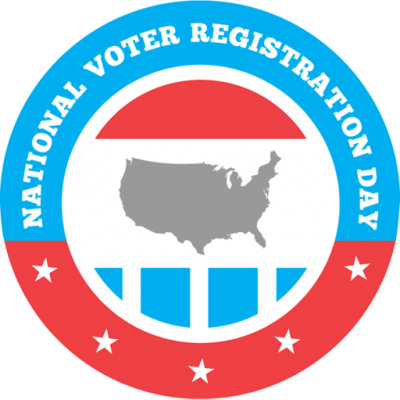
September 17, 2024 is also National Voter Registration Day, a day set aside every September to promote awareness of voter registration opportunities and to encourage eligible Americans to exercise this precious obligation to make their voices heard in the upcoming elections. Deputy Voter Registrars will be available today to help you register to vote from 3:00 p.m. to 5:00 p.m. in Willis 250H for our Constitution Day Program and also on October 7 (the last day to register in order to vote in this year’s election) between 10:00 a.m. and 2:00 p.m. in the Willis Library Lobby.
You can also obtain voter registration forms at Willis Library or Sycamore Library and find more information about registering to vote at votetexas.gov and votedenton.gov
See the UNT Libraries Voting and Civic Engagement guide for information about how you can become active in your nation, your state, your local community, and at UNT!
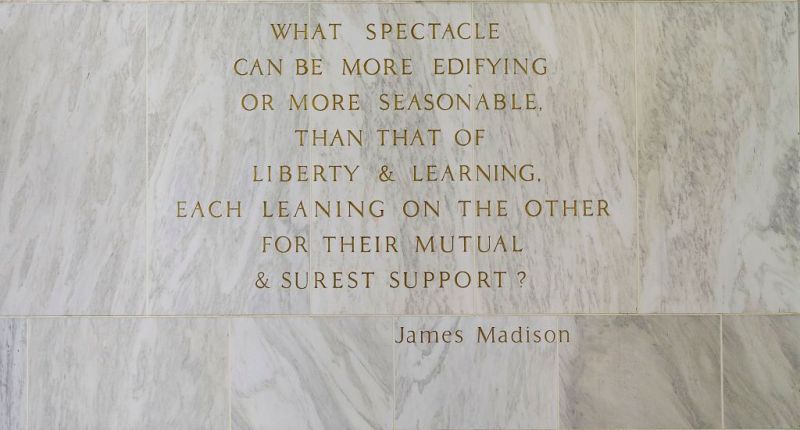
Article by Bobby Griffith.


Leave a Reply